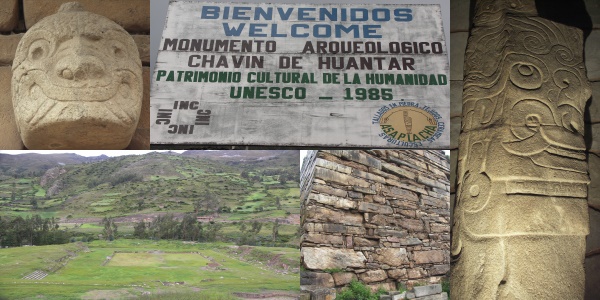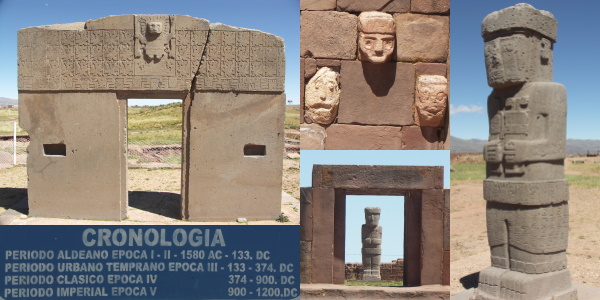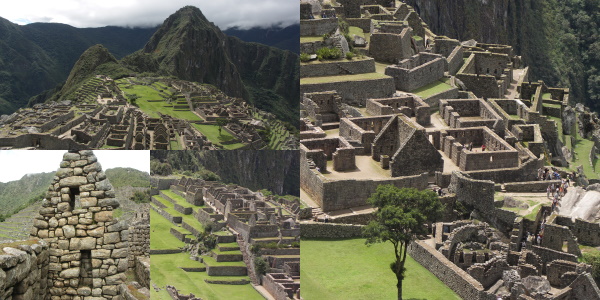Such is life
Crossing Latin-America

Peru - A country with many cultures
|
Every traveller connects the Inkas with Machu Picchu and Machu Picchu with Peru. When talking
about the Moche, the Chimú or the Chavín Peru is not that obvious. These cultures
are pre-inkan cultures, which lived in Peru since BC 2000. When comparing the time ranges of the
different cultures, the Inka only existed for approx. 400 years, wereelse the pre-inkan cultures
existed in the north parts of Peru for more than 3000 years.
|
|||
|
|

This site is characterized by a high number of underground tunnels and chambers, which have an incredible good ventilation system. They were used as food stores or jails and additionaly had a water piping system. You can also see the 4m high "Lanzón de Chavín", a carved piece of rock. 
|
||
|
|

There are no written tradition of the Moche. The scientists got their knowledge of
their daily live only from
analyzing their ceramics. Jars show scenes of their lives.

|
||
|
|

Sipán, a pyramid built of millions of adobe-bricks, was expanded over generations. Scientists discovered 17 graves under the pyramids, all built in different periods. The most famous tomb is the one of El Señor de Sipán. It took several years to excavate the grave and to conserve all the found objects. The museum 'Tumbas Reales de Sipán' shows (by the use of models) the arrangement of all the objects. 
|
||
|
|

The whole plataeu (500km²) between nowadays Nasca and the city of Plapa shows gigantic formations carved into the rocks or the desert. 800 straight lines (some several kilometers of length) 300 geometric figures and 70 spectacular animals, like kolibri, orca or monkey. In the national museum in Lima you can see a minature of the plataeu with all the carvings. 
|
||
|
|

4 different cultures lived in the site of Pachacamac
- Lima (200 AD), Wari (since 650 AD), Yschma und Inka (about 1400 AD).
Each culture increased the site with new temples and buildings.

|
||
|
|

The Wankari lived in the north of Bolivia, near the Titikaka lake. They were fishermen, had Lamas and cultivated potatoes. Based on that culture the fascinating Tiahuanaco culture evolved. The Tiahuanaco were one of the first cultures, which used huge rocks to build their temples. Some of these rocks had a weight of more than 25 tons. According to the scientists the site Tiahuanaco had about 20.000 inhabitants who lived in an areas of about 2,6km² 
|
||
|
|

Chan Chán with about 60.000 inhabitants was build in an area of about 28km² and is nowadays the biggest Adobe town in the world. The city was build by the Chimú which were knpwn for the highly established social structure. Art was very important and the Chimú are famous for their gold smiths. In 1471 the city was conquered by the Inkas and furtheron destroyed by the Spainards. 
|
||
|
|

The site of Kuélap lies on a mountain top about 3100 m high and was build by the inhabitants of Chachapoyas. The site is about 600 m long and has walls which are up to 12 m high. Behind the walls there are 400 round buildings. Supposably because of a plague the Spainards burned the whole city down. 
|
||
|
|

The empire of the Inka was based on military disciplin, a ramified street net, crop growing on terasses,
water piping systems and stone architecture.
|
||
last update: June/21/2006

